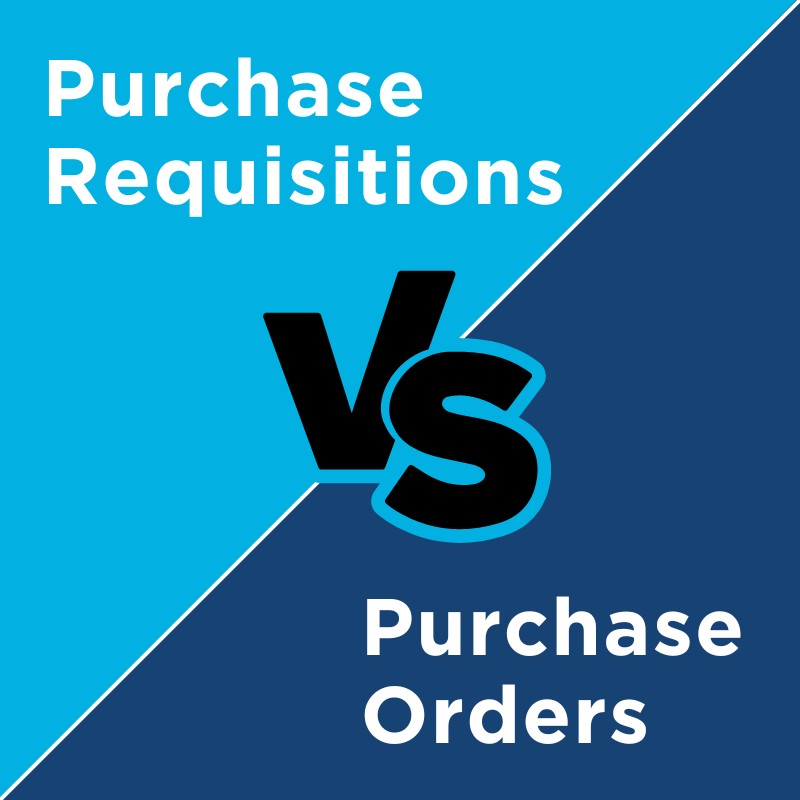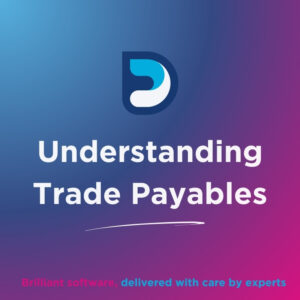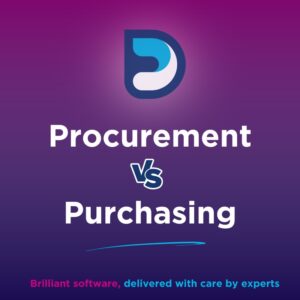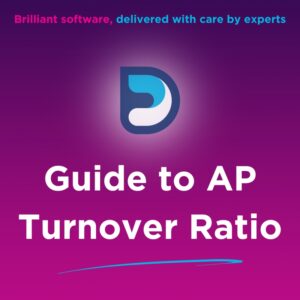A Direct Comparison of Purchase Requisitions and Purchase Orders
In the complex world of procurement operations, clarity is king. For procurement managers, business owners and finance professionals in the UK, understanding the differences between purchase requisitions and purchase orders is essential. These two vital components play distinct roles in the procurement process, each carrying its weight in ensuring efficiency, compliance, and cost-effectiveness.
In this comprehensive guide, we delve into the differences and applications of purchase requisitions and purchase orders, empowering you to navigate procurement dynamics with confidence and precision.
What is the Difference Between Purchase Order and Purchase Requisition?
- Initiation
- Approval process
- Legal implications
- Documentation and detail
- Track-ability and accountability
- Supplier communication and relationship management
- Compliance and risk mitigation
Initiation
Purchase Requisition: Originates from within the organisation, typically initiated by heads of departments or employees who identify a need for goods or services.
Purchase Order: Generated after the approval of a purchase requisition, formalising the procurement transaction and creating a contractual obligation with the supplier.
Approval Process
Purchase Requisition: Subject to an approval workflow, where designated stakeholders review and authorise the request based on budgetary constraints and organisational objectives.
Purchase Order: Issued once the purchase requisition is approved, indicating the organisation’s commitment to acquiring the specified goods or services under the agreed terms and conditions.
Legal Implications
Purchase Requisition: Non-binding document that signals an intent to purchase but does not create contractual obligations.
Purchase Order: Legally binding agreement between the buyer and the supplier, outlining the terms and conditions of the purchase and establishing contractual obligations for both parties.
Documentation and Detail
Purchase Requisition: Contains detailed information about the requested items or services, including quantity, specifications, quality standards, and any other relevant details.
Purchase Order: Provides comprehensive instructions and terms of the purchase, including descriptions, quantities, unit prices, delivery dates, payment terms, and any other relevant terms and conditions.
Track-ability and Accountability
Purchase Requisition: Initiates the procurement process and provides a documented record of the organisation’s needs and requests.
Purchase Order: Facilitates efficient tracking and management of procurement activities, enabling stakeholders to monitor the progress of orders, track expenditures, and reconcile invoices with the original purchase orders.
Supplier Communication and Relationship Management
Purchase Requisition: Communicates the organisation’s requirements and needs to the procurement team, initiating the sourcing and supplier selection process.
Purchase Order: Communicates expectations, terms, and delivery requirements to the supplier, facilitating clear communication and fostering strong supplier relationships.
Compliance and Risk Mitigation
Purchase Requisition: Provides an opportunity to assess the financial impact of procurement requests and ensure compliance with internal policies and regulatory requirements.
Purchase Order: Helps mitigate the risk of fraud, errors, and non-compliance by standardising procurement processes, documenting transactions, and enforcing contractual terms and conditions.
While purchase requisitions initiate the procurement process by articulating the organisation’s needs and requirements, purchase orders formalise the transaction and establish contractual obligations with suppliers. Understanding the procedural and functional differences between the two is essential for effective procurement management, enabling organisations to streamline workflows, mitigate risks, and optimise resource allocation within their operations.
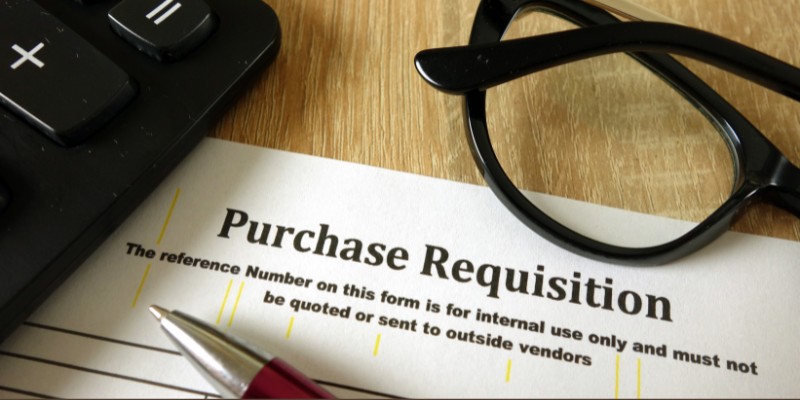
What is a Purchase Requisition?
A purchase requisition marks the inception of the procurement journey. It is the formal request made by an employee or department within an organisation to acquire goods or services from an external supplier. Think of it as the initial step, where the need for a particular item or service is identified and communicated to the procurement team or relevant authority.
Key Characteristics of Purchase Requisitions:
Initiation of the Procurement Process
Purchase requisitions serve as the trigger point for procurement activities. They originate from within the organisation, often initiated by departments or individuals who require specific goods or services to fulfil their operational needs.
Detailed Description of Requirements
A well-crafted purchase requisition includes detailed information about the item or service needed, such as quantity, specifications, quality standards, and any other relevant details. This clarity ensures that the procurement team can accurately assess the requirements and proceed with sourcing the right supplier.
Approval Workflow
Before a purchase requisition can progress to the next stage, it typically undergoes an approval process. Depending on the organisation’s hierarchy and policies, the requisition may need to be reviewed and authorised by designated stakeholders, such as department heads or budget holders. This step ensures that requests align with budgetary constraints and organisational objectives.
Non-Binding Nature
It’s essential to note that purchase requisitions are non-binding documents. While they signal an intent to procure, they do not legally bind the organisation to make a purchase. Instead, they provide the groundwork for further procurement actions, including the creation of purchase orders.
The Purchase Requisition Workflow Explained
The purchase requisition workflow outlines the step-by-step process of how requests for goods or services are generated, reviewed, approved, and processed within an organisation. Here’s a breakdown of the typical purchase requisition workflow, along with an accompanying infographic…
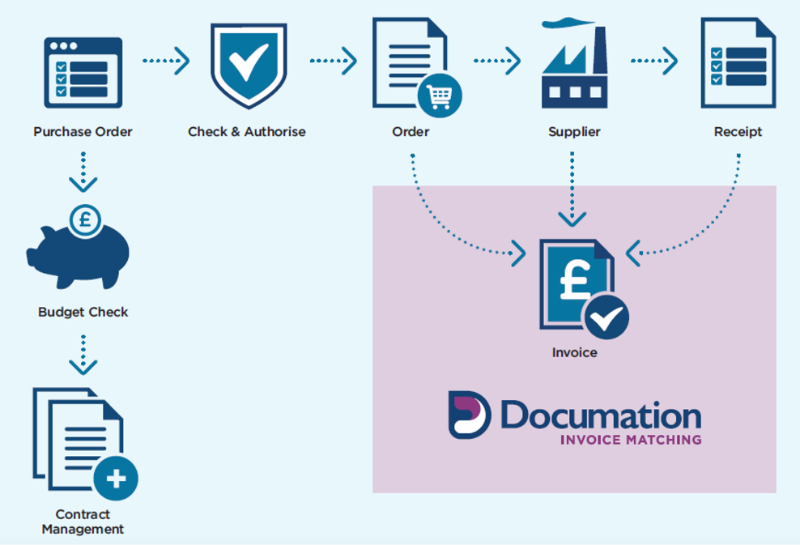
1. Request Initiation
Department heads or employees identify a need for goods or services and initiate a purchase requisition request. They fill out a purchase requisition form, providing detailed information about the items or services required, such as quantity, specifications, and any other relevant details.
2. Review and Validation
The purchase requisition is routed to the appropriate authority or department for review and validation. The reviewer verifies the accuracy and completeness of the information provided, ensuring that the request aligns with budgetary constraints and organisational objectives.
3. Approval Workflow
The purchase requisition undergoes an approval workflow, where designated stakeholders review and authorise the request. Depending on the organisation’s hierarchy and policies, the requisition may need to be approved by department heads, budget holders, or other relevant authorities.
4. Budgetary Control
The approval process includes validation against budgetary allocations to ensure that the requested items or services fall within the allocated budget. If the requisition exceeds the budget, it may be sent back to the requester for revision or escalated to higher-level management for further review.
5. Documentation and Record-keeping
Once approved, the purchase requisition is documented and recorded in the organisation’s procurement system or database. A unique requisition number is assigned for tracking purposes, and all relevant details, including the requester’s information, requested items, and approval status, are recorded.
6. Supplier Sourcing and Selection
After approval, the procurement team initiates the sourcing and supplier selection process based on the requirements outlined in the purchase requisition. They evaluate potential suppliers, obtain quotes or proposals, and negotiate terms and conditions to ensure the best value for the organisation.
7. Purchase Order Generation
Upon selecting a supplier, the procurement team generates a purchase order based on the approved purchase requisition. The purchase order formalises the transaction, outlining the specifics of the purchase, including descriptions, quantities, prices, delivery dates, and payment terms.
8. Communication with Stakeholders
Throughout the process, stakeholders, including the requester, approvers, and procurement team, are kept informed of the status of the purchase requisition. Any changes or updates to the requisition are communicated promptly to ensure transparency and accountability.
9. Tracking and Monitoring
The progress of the purchase requisition is tracked and monitored throughout the workflow. Key metrics, such as cycle time, approval times, and budget adherence, are monitored to identify bottlenecks, streamline processes, and improve efficiency.
10. Closure and Documentation
Once the purchase order is issued and the transaction is completed, the purchase requisition is closed out in the procurement system. A record of the requisition, along with supporting documentation, such as quotes, approvals, and correspondence, is maintained for audit and compliance purposes.
The purchase requisition workflow ensures that requests for goods or services are systematically reviewed, approved, and processed within an organisation. By following a structured workflow, organisations can effectively manage procurement activities, maintain budgetary control, foster compliance, and optimise resource allocation.

What is a Purchase Order?
Once a purchase requisition has been approved and vetted, it paves the way for the creation of a purchase order. Unlike requisitions, purchase orders are legally binding documents that formalise the procurement transaction between the buyer (the organisation) and the seller (the supplier). They provide detailed instructions and terms of the purchase, serving as a contractual agreement between the two parties.
What Information is on a Purchase Order Form?
Formalisation of the Transaction
Purchase orders represent the culmination of the procurement process. They translate the requirements outlined in the purchase requisition into a formal agreement with the supplier. By issuing a purchase order, the organisation commits to acquiring the specified goods or services under the agreed terms and conditions.
Specific Details and Terms
A purchase order contains comprehensive information, including the description of the items or services, quantities, unit prices, delivery dates, payment terms, and any other relevant terms and conditions. This level of specificity ensures clarity and minimises the risk of misunderstandings or disputes between the buyer and the supplier.
Legal Obligation
Unlike purchase requisitions, purchase orders carry legal significance. Once issued, they create a contractual obligation for both parties. The buyer is obligated to pay for the goods or services as per the terms outlined in the purchase order, while the supplier is bound to fulfill the order according to the specified requirements and delivery schedule.
Track-ability and Accountability
Purchase orders facilitate efficient tracking and management of procurement activities. They provide a documented trail of transactions, enabling stakeholders to monitor the progress of orders, track expenditures, and reconcile invoices with the original purchase orders. This transparency enhances accountability and helps mitigate the risk of errors or discrepancies in procurement processes.
How Important are POs?
1. Legal Protection
POs serve as legally binding contracts between the buyer and the supplier, outlining the terms and conditions of the transaction. Without POs, there is no formal documentation of the agreed-upon terms, leaving both parties vulnerable to disputes and legal ramifications in case of disagreements or breaches of contract.
2. Financial Control
POs provide a structured framework for managing procurement expenditures and controlling costs. They establish clear pricing, quantities, and payment terms, helping to prevent overspending, unauthorised purchases, and invoice discrepancies. Without POs, organisations risk budget overruns, financial losses, and challenges in reconciling expenditures with budget allocations.
3. Supplier Relationships
POs facilitate clear communication and expectations between the buyer and the supplier, fostering stronger relationships based on trust and transparency. They provide suppliers with assurance regarding the scope of work, delivery requirements, and payment terms, leading to smoother transactions and enhanced supplier performance. Without POs, suppliers may experience uncertainty and delays in fulfilling orders, leading to dissatisfaction and strained relationships.
4. Inventory Management
POs help organisations maintain optimal inventory levels by specifying the quantities and timing of goods to be delivered. They enable better forecasting and planning, reducing the risk of stockouts, excess inventory, and associated carrying costs. Without POs, organisations may face challenges in managing inventory levels effectively, leading to operational disruptions and inefficiencies.
5. Compliance and Auditing
POs play a crucial role in ensuring compliance with internal policies, procurement regulations, and audit requirements. They provide a documented trail of procurement transactions, which can be easily audited for accuracy, transparency, and compliance with regulatory standards. Without POs, organisations may struggle to demonstrate compliance with procurement policies and regulatory requirements, exposing them to penalties, fines, and reputational damage.
6. Scalability and Growth
POs support scalability and growth by standardising procurement processes and enabling efficient resource allocation. They streamline workflows, reduce manual errors, and facilitate scalability by providing a structured framework for managing procurement activities. Without POs, organisations may encounter difficulties in scaling their operations, managing increased procurement volumes, and maintaining consistency in purchasing practices.
Purchase Orders (POs) are essential tools for managing procurement operations effectively. They provide legal protection, financial control, and transparency, while also fostering strong supplier relationships, facilitating inventory management, ensuring compliance, and supporting scalability and growth. Organisations that neglect to implement POs expose themselves to legal, financial, and operational risks, jeopardising their stability, reputation, and long-term success.

Automating Purchase Order and Requisition Processes
Automating purchase order (PO) and requisition processes offers numerous advantages for organisations seeking to streamline procurement operations and improve overall efficiency. Software solution providers like Documation provide robust automation tools that can revolutionise how businesses manage their procurement workflows.
1. Increased Efficiency
Automation eliminates manual tasks, such as data entry and document routing, saving time and reducing the risk of errors. Documation’s software streamlines the entire procurement process, from requisition creation to PO generation and approval, accelerating cycle times and improving productivity.
2. Enhanced Accuracy
Automated systems ensure data consistency and accuracy by standardising processes and enforcing validation rules. Documation’s solutions feature built-in validation checks and error alerts, minimising the risk of discrepancies and ensuring compliance with procurement policies and regulations.
3. Improved Visibility and Control
Automation provides real-time visibility into the status of POs and requisitions, enabling stakeholders to track progress, monitor spending, and identify bottlenecks. Documation’s software offers customisable dashboards and reporting tools that empower organisations to gain insights into procurement performance and make data-driven decisions.
4. Seamless Integration
Automated systems seamlessly integrate with existing ERP and financial systems, ensuring data integrity and eliminating the need for manual data entry and reconciliation. Documation’s solutions are compatible with leading ERP platforms, enabling seamless integration and interoperability with other business systems.
5. Compliance and Audit Readiness
Automation enforces compliance with procurement policies and regulatory requirements by standardising processes and capturing audit trails. Documation’s software includes audit trail functionality and document archiving capabilities, facilitating compliance with regulatory standards and simplifying audit preparation.
6. Cost Savings
By streamlining procurement processes and reducing manual effort, automation helps organisations save time and resources. Documation’s solutions optimise resource utilisation, minimise procurement-related costs, and deliver measurable ROI through increased efficiency and reduced operational overhead.
Documation’s Finance Process Automation Solutions
Documation offers comprehensive procurement automation solutions designed to meet the diverse needs of businesses across industries. Our software streamlines procurement workflows, enhances collaboration, and improves visibility and control over the entire procurement lifecycle.
As well as providing useful finance guides to help wider problems, we delve deep into your pain points to understand your business’ needs and what may be causing them. We take time to listen, ask questions and get to know you so that we’re able to offer a bespoke solution to suit your requirements.
Get in touch with our listening team to see how we can help!
